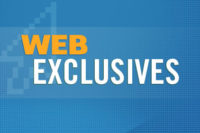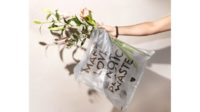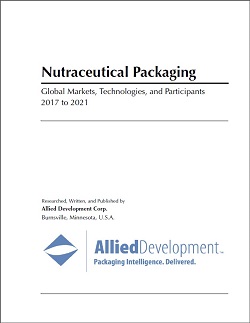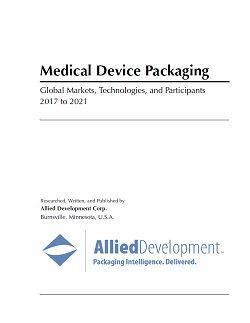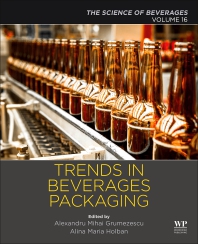The winds of change blew hard this year. Some markets shrunk while others grew, supply chain weaknesses were exposed and a pandemic kept many consumers at home where they did much of their shopping online.
Brands in every product category from luxury wines to bargain shampoos are forced to reckon with this “new normal” and begin preparing for what’s next.
And while we can’t predict the future, we do produce a lot of labels — and therefore have the privilege of witnessing packaging trends firsthand.
We distilled our list down to five trends every brand owner needs to watch out for in 2021:
- Forward-thinking brands have a chance to transform these COVID-related challenges into opportunities
- Storytelling has become a key component of product labels
- Neuromarketing studies reveal exactly how labels impact consumer perception of products
- How to respond to the push for more sustainable labeling materials
- Near-field communication (NFC) use has the potential to expand greatly in coming years
Reducing costs, eliminating risk and engaging consumers becomes more important than ever
Unprecedented, uncertain, unpredictable. Whatever “un-” word you use to describe the pandemic and the resulting fallout, one thing is clear: The status quo is being challenged in every market and product category.
Here are a few COVID-related challenges every brand is facing right now (and how each can be transformed into an opportunity):
Cutting year-over-year packaging costs. Cost reduction is always in vogue, but it’s never more fashionable than when the market is uncertain. And if your brand is planning to send your labels out to bid in the coming year, you have a huge opportunity — not only to cut costs, but also to drive value and efficiency.
Don’t squander it by sending out the same RFI spreadsheet you’ve always used. Instead, lean on the expertise of the label converters you’re reaching out to by asking them for recommendations about material selection, cost-saving opportunities, reducing risk in your supply chain or leveraging technology (like smart labels) that could drive post-purchase consumer engagement.
COVID has tested the strength of supply chains, and risk reduction is top of mind. The last thing you need right now is to miss a retail delivery deadline because of a label shortage. And with so much up in the air, the best way to prevent that from happening is to have a plan B.
If you already have a secondary label supplier, you’re ahead of the game. If you don’t, you need to partner with one in 2021. That way you’ll be prepared no matter when the next uncertain, unprecedented and unpredictable situation arises.
Consumer behavior is shifting, and operating on autopilot isn’t an option right now. Data indicates that the COVID pandemic has made consumers less trusting, more interested in the safety and cleanliness of the products they buy, and more likely to shop online.
You have to communicate a lot of information (your brand story, safety information, ingredients, etc.) to make consumers feel comfortable purchasing your product. And because they’re doing more of their shopping online, you can’t rely on in-store displays and advertisements to deliver this information.
That information has to be on your package. It’s the only way it’ll reach every consumer. This is a challenge, sure. But it’s also a huge opportunity for brands that confront it head-on — better positioning themselves to the needs of consumers in their “new normal.”
Labels are a main character in your brand story
Ask any label designer worth their salt about what the secret to effective labels is, and they’ll respond with some variation of, “Tell a compelling story.”
M_use, a label design resource from material supplier Avery Dennison, routinely speaks with the top label designers in the industry. And when the members of that elite group discuss their craft, storytelling comes up again and again:
- “We find a short story to tell, and then we use disruptive designs that attract attention at the point of sale.” — Diego Giaccone of Sure Brandesign
- “To be effective … means to communicate the origin story of a brand or product without words.” — From an article on designer Aly Dodds
Stories, designers argue, forge a relationship between brand and consumer. And almost nine in 10 consumers said they trust brands that provide straightforward information on their products and business practices, according to a report from Label Insight.
When customers walk into a store they are bombarded with choices, and the only point-of-purchase touchpoint you have is your label. The story it tells could be the difference between your product being carried to the register — or left on the shelf.
Neuromarketing study reveals that textured, paper labels are key to product premiumization
As premiumization emerges as a key trend across product categories, it’s important to note the power of tactile, paper labels to command higher price points.
A recent neuromarketing study sought to measure the impact of different materials on the buying decisions of consumers, textured paper materials stole the show. “Uncoated, tactile materials more strongly activate a sense of authenticity, price value and being ‘premium’ than coated, flat materials,” according to the study.
Award-winning label designer Mario di Paolo captures the power of paper best: “There is still a need for visceral contact with the product … Consumers need inspiring new materials; materials that make them dream and that transmit the story behind the products they’re consuming.”
The study referenced above is part of a larger trend wherein neuromarketing research is used to guide and justify label material and embellishment decisions. Neuromarketing studies seek to uncover how different material, embellishment and design combinations can influence consumer expectations of quality and price and, most importantly, how labels influence purchase decisions.
For a background on neuromarketing, and the research tactics it employs, skim through this study from label materials supplier UPM Raflatac. It provides valuable information on how neuromarketing studies are conducted, and sheds light on how, exactly, the label influences point-of-purchase decision-making.
This could be the year to consider switching to more sustainable packaging
Most major brands have already announced sustainability initiatives that encompass all facets of their business. Consider Coke’s 2020 goals, Nestlé’s packaging pledge and similar commitments by Amazon, Unilever and Procter & Gamble. The factor that unites all these pledges is a promise to find greener, more environmentally responsible packaging solutions.
And it may be time for those brands who haven’t yet considered switching into more sustainable packaging to make pledges of their own.
For those considering making the switch, here are just a few of the sustainable label options on the market today:
- Today, there are film constructions that are as much as 50% thinner than their conventional counterparts — greatly reducing the water and energy requirements to create the material.
- Adhesives have been engineered that allow for better label/bottle separation, maximizing recovery of PET plastic during the recycling process.
- There’s a wide variety of recycled label materials from different sources: Paper, barley, grapes, cotton and more.
Once you develop your brand’s goals, your label converter will align the labeling solution with the right environmental benefits to meet them. Here, you can see actionable (and manageable) steps your brand can take today to move toward more sustainable labels.
NFC is poised for exponential growth
If you’ve used contactless payment (e.g., Apple Pay), you’ve used near-field communication (NFC) technology. Essentially, NFC allows for the secure, contactless transfer of information between an NFC tag and an NFC reader.
Because most smartphones today function as NFC readers, NFC labels are popular for creating unique brand experiences at — and beyond — the point of sale.
It’s easy to see how COVID could further catalyze the growth of NFC, as it enables touchless access of information from printed materials is a key benefit of NFC tech. NFC-enabled printed products (e.g., maps, menus, labels) allow consumers to access all different kinds of pertinent information — without touching the surface.
The use cases for NFC as a labeling tool are limited virtually only by your imagination. You don’t have to look far to find truly creative cases of how brands have used NFC labels:
- Touchless access of information from labels, menus and other printed informational materials
- Incorporating omnichannel promotional campaigns into the product label itself
- Using NFC labels that recognize when a product’s been opened to present different marketing content before and after the sale
- Authentication of medical devices, vintage wines and other high-end goods
Now is the time to make sure you understand how your brand can leverage NFC. Deploying a well-crafted NFC solution takes time. Brands that don’t start experimenting today will be hard-pressed to catch up to their early-adopting competitors. And unless consumers all stop using their cell phones, brands have no choice but to have a strong mobile strategy in place ready to launch.
As you can see, product differentiation, risk reduction and consumer engagement are more important this year than ever before. And you’ll need to work closely with your label converter to get a leg up on the competition and make your product stand out on the shelf.






